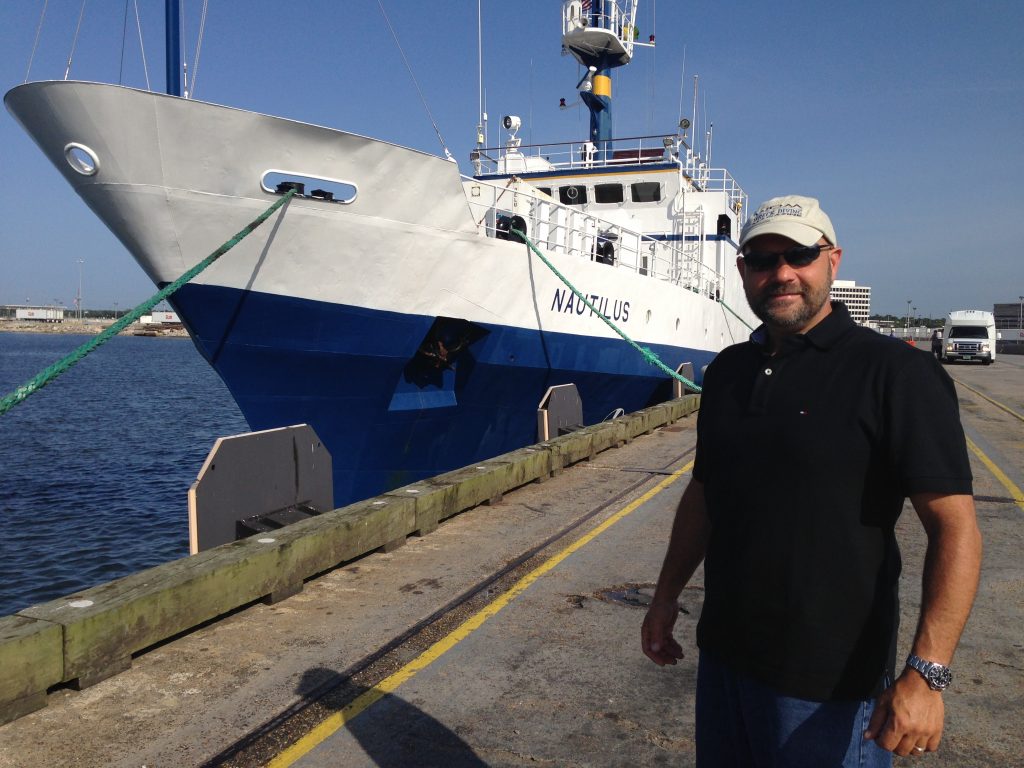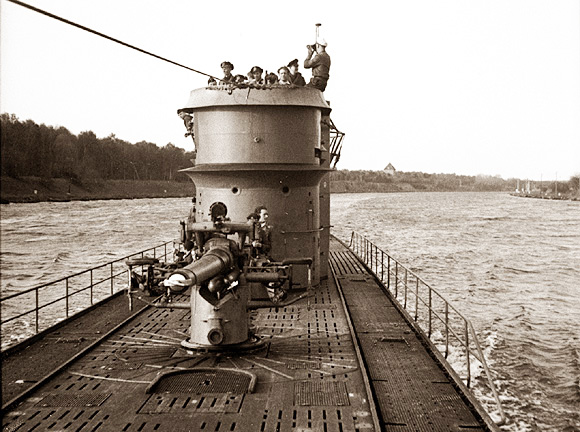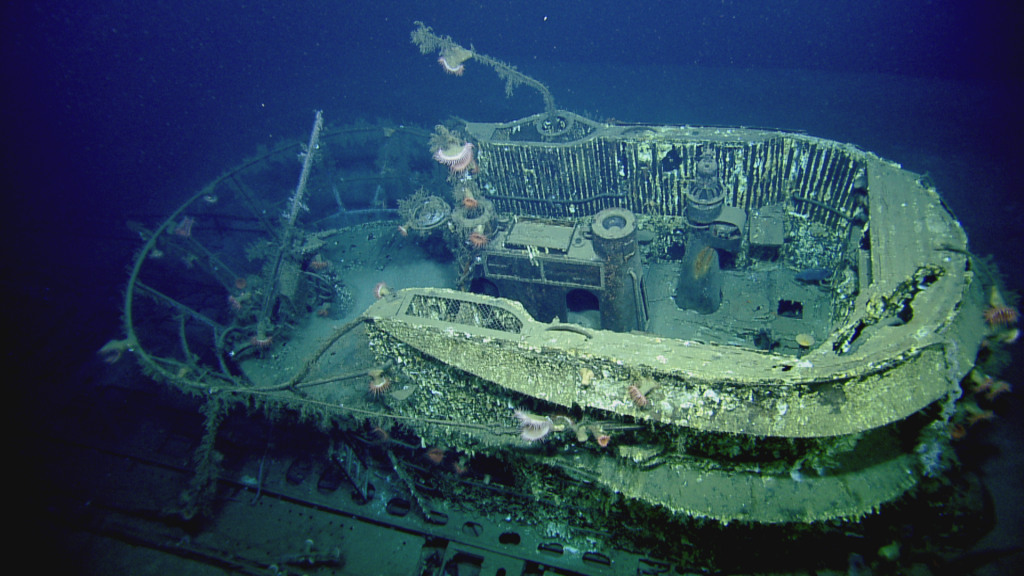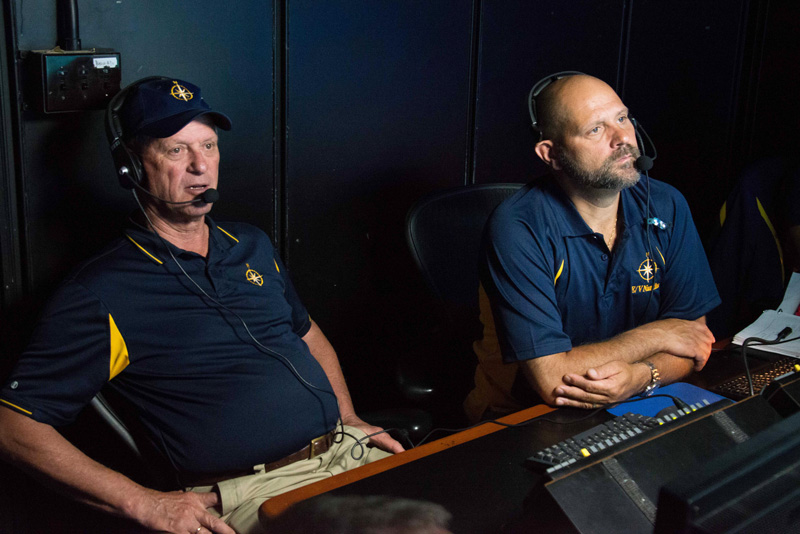Richie Kohler is an experienced technical wreck diver and shipwreck historian who has been diving and exploring shipwrecks since 1980. Together with John Chatterton, Kohler was one of the co-hosts of the television series Deep Sea Detectives on the History Channel, and is also a consultant for the film and television industry on shipwreck and diving projects. Kohler’s work identifying a World War II German Submarine, the U-869, off the coast of New Jersey has been the subject of several television documentaries and the best-selling book “Shadow Divers” by Robert Kurson.
Words by Michael Bear, Photos courtesy of Richie Kohler/PBS Nova
Kohler’s lifelong passion has been exploring the famous shipwrecks around the world, including the SS Andrea Doria and the RMS Titanic.
Recently, we caught up with Richie to see what he had been up to since our last interview with him in 2012.
Q: The first interview we did with you in 2012 was quite popular and got a lot of visits. Thanks for letting us do a Part II! What have you been up to since we last talked?
A: I have been quite busy with a myriad of dive and film projects, including multiple expeditions throughout the Mediterranean and Aegean aboard the “U-Boat Navigator”, a Maltese based research vessel working with the Russian Geographical Society. Working with the Maltese-based organization “U-Group” over the past five years, I have been exploring shipwrecks in the Mediterranean and Aegean aboard their purpose-built vessel the “U-Boat Navigator”. As dive platform, they have a six place decompression chamber aboard and a four-man diving bell, capable of supporting hard hat as well as free swimming divers in waters up to 400 feet deep. Combined with a full-size ROV and two Triton submersibles, we have discovered, explored and imaged shipwrecks as the HMS Olympus, HMS Russel, the SS Burdigala, the HMY Aegusa, and probably the most famous (and my favorite), HMHS Britannic.
In 2005, after making a series of dives on what is arguably the most famous, or infamous shipwreck in history, RMS Titanic, our research brought us to explore her lesser known, but equally tragic sister ship, HMHS Britannic. Located in 400 ft of warm gin-clear water just off the idyllic island of Kea, I first laid eyes on the intact passenger liner in 2006 and fell in love. Where Titanic is an epic tragedy, shrouded in eternal darkness in the cold depths of the Atlantic, the warm clear waters of the Aegean have given the Britannic new life. Rising 100 feet off the seafloor and measuring just under 1000 feet long, she is the largest intact passenger liner in the world accessible to divers. I spent the next ten years of my life trying to unravel the mystery of why this great ship sank, despite numerous design and safety changes after the loss of her more famous sister who sank three times faster. Following the footsteps of diving legends of Jacques Cousteau and Dr. Bob Ballard, I poured myself into the legend and stories surrounding the ship. After making numerous dives into the ship over the last decade, the answer was finally discovered but would come at a terrible cost.
Editor’s note: in 2009, Richie’s friend and mentor, Carl Spencer, died tragically during the exploration of the Britannic.
I have also published my first book, “Mystery of the Last Olympian” which details my decade of work and exploration on Titanic’s sister ship the HMHS Britannic.
Q. We’d like to ask you about some of the projects you’ve been involved with since 2006. In 2014, you were part of a team led by oceanographer Robert Ballard which explored and mapped the wreck of the U-166, a Type 9, long-range U-Boat with remotely operated vehicles and determined that the bow of the submarine was destroyed, apparently by a depth charge which caused an internal explosion of the submarine’s own torpedoes (subject of a NOVA/National Geographic documentary titled, ‘Nazi Attack on America.’
What got you interested in this particular U-Boat to begin with?
A: I spent ten years living on the Gulf Coast side of Florida in what was back then a sleepy little fishing town. Every fisherman or shrimp boat captain swore they knew the location of the missing U-boat. As a brand new diver in 1975, one of my first offshore dive trips was to look for the wreck of the U-166. Every snag, every bump on the fish finder held promise and mystery, but none ever panned out to be a shipwreck, much less the U-166. I would go on to dive the U-boat wrecks off New England and North Carolina, which fanned my enthusiasm, but as you know, it would be the discovery of the U-Who off New Jersey which really changed my life! It would be years later before the location of the U-166 would be accidently discovered in very deep water by an oil company looking to lay a pipeline.
When the news hit, like others I found the story fascinating, and was truly flattered (floored is more like it), when Dr Bob Ballard invited me aboard his research vessel, the EV Nautilus, to go out and document WWII shipwrecks in the Gulf of Mexico, including the U-166, as his expert on the type IXC U-boat and U-Boat operations in the Gulf during World War Two.
Every snag and every bump on the fish finder held promise and mystery, but none ever panned out to be a shipwreck, much less the U-166. I would go on to dive the U-boat wrecks off New England and North Carolina which fanned my enthusiasm, but as you know, it would be the discovery of the “U-Who” off New Jersey which really changed my life. It would be years later before the location of the U-166 would be accidentally discovered in very deep water by an oil company looking to lay a pipeline.
Q: Some say that your expedition rescued the reputation of the captain of the USS PC-566, a sub chaser that was escorting the Robert E. Lee when it was sunk by the U-166. Do agree with that assessment?
A: While surveying the U-166 aboard the EV Nautilus, I made the offhand comment to Dr. Bob Ballard that I felt the US Navy had not (at the time), treated Captain Claudius and his crew fairly, and that even since the wreckage was located back in 2001 they had still not corrected the record. Ballard agreed this oversight needed to be fixed, and made a satellite call to a shipmate of his, U.S. Navy Admiral Jonathon Greenert, the current Chief of Naval Operations, who promised to look into it. The wheels of Government may move slowly but eventually, they do move.
On December 16, 2014, I was honored to join Dr. Ballard in the Pentagon as the Secretary of the Navy Ray Mabus and CNO Admiral Greenert awarded Captain Herbert Claudius (posthumously) the Legion of Merit for valor in action for the destruction of U-166. Captain Claudius’s son Gordon was present and accepted the award on his father’s behalf. It was then and there, while shaking Gordon’s Claudius’s hand in the Pentagon, that the connection between past and present and a deep sea mystery 5000 feet down finally came to the surface. It is what I love about being a shipwreck explorer – the chance for our work to make a difference in people’s lives.
Q: What’s it like working with Bob Ballard?
A: Bob, (as he likes to be called), was a gracious host aboard the EV Nautilus and is really very down-to-earth and easy to talk to. His enthusiasm and passion for underwater exploration is his driving force – he never got tired of filming and researching every aspect of the shipwrecks we explored. While sitting next to him in the control room, watching the feeds come in from the ROV’s, our banter on camera was real and unrehearsed. Like me, he LOVES this. The entire team was first rate and it was great be a part of their crew, even for a short time. I enjoyed our off-work times equally as much, sharing a beer and getting to know the man behind the legend.
Q: What advice do you have for those who might be interested in having a career like yours? Should they pursue tech diving and rebreather training? And, which is better: being good or being lucky?
A: Go diving: you will never find new horizons if you don’t push off from the shore! Deep technical diving may not be for everyone, but I feel everyone can enjoy our ocean realm, directly or indirectly. As divers, we can bring the images and stories to those who stay ashore. But for those so inclined to go further and pursue technical diving, I suggest working up to it slowly and enjoying the methodical progression of experience and knowledge. In doing so, you’re fully developing skills that will help keep you safe, you will be able to enjoy the experiences you’re undertaking. That approach to challenging dives is “being good”, and that will bring you luck, as I believe we each make our own luck.
For those interested in reading more about Richie’s exploits, visit Richie’s website at http://www.RichieKohler.com
Words by Michael Bear, Photos courtesy of Richie Kohler/PBS Nova
Michael Bear is an avid scuba diver based in San Diego and a regular contributor to California Diver Magazine. Mike is the founder of Ocean Sanctuaries, an ocean-related related nonprofit organization (NPO) that is focused on gathering and sharing data from various citizen science projects, as well as documentary filmmaking. He also runs the Facebook group Shark Conservation Non-profits, a central place on Facebook where those who are actively involved with shark or elasmobranch (shark/ray) conservation at the non-profit and NGO level can come together to share news, research and ideas.





